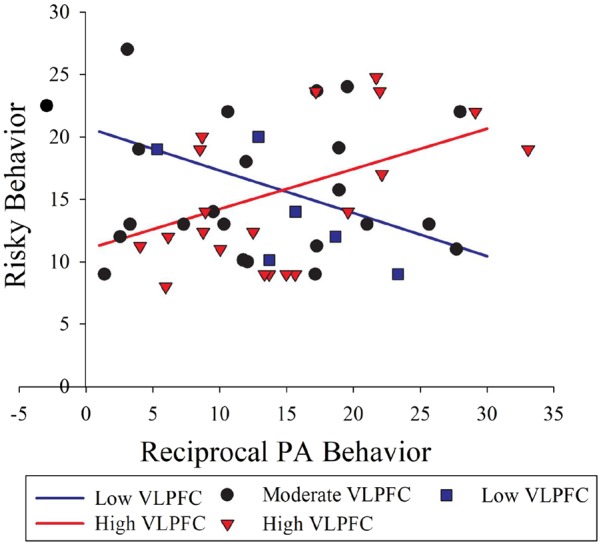Fig. 3.

Illustration of conditional effects of adolescents’ contingent positive affect (PA) behavior on their real-life risky behavior at high and low levels of left VLPFC response to the Best Friend Task, which involves peer social reward. The lines’ slopes (−0.07, 0.80) reflect the levels of VLPFC response at which contingent positive affect behavior and risky behavior become negatively and positively correlated, respectively. These illustrate the high and low values beyond which VLPFC is a statistical moderator, with better accuracy than the convention of presenting values reflecting ±1 s.d. of the mean value for the moderator. The larger number of cases for the combination of higher positive affect and higher VLPFC (i.e. higher region of significance; red triangles) than for lower positive affect and lower VLPFC (i.e. lower region of significance; blue circles) likely reflects the combinations evident in a community sample of typically developing adolescents. In other words, having fewer cases in the lower region of significance does not indicate that the interaction effect is driven by outliers. Scatter points represent actual data values. One case was removed because analyses indicated that it was an outlier for VLPFC response.
